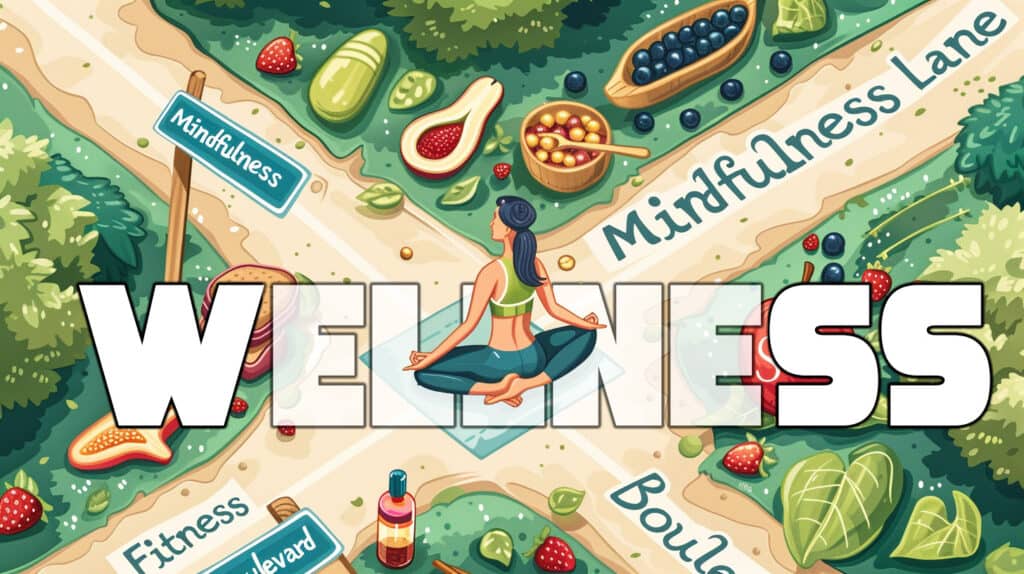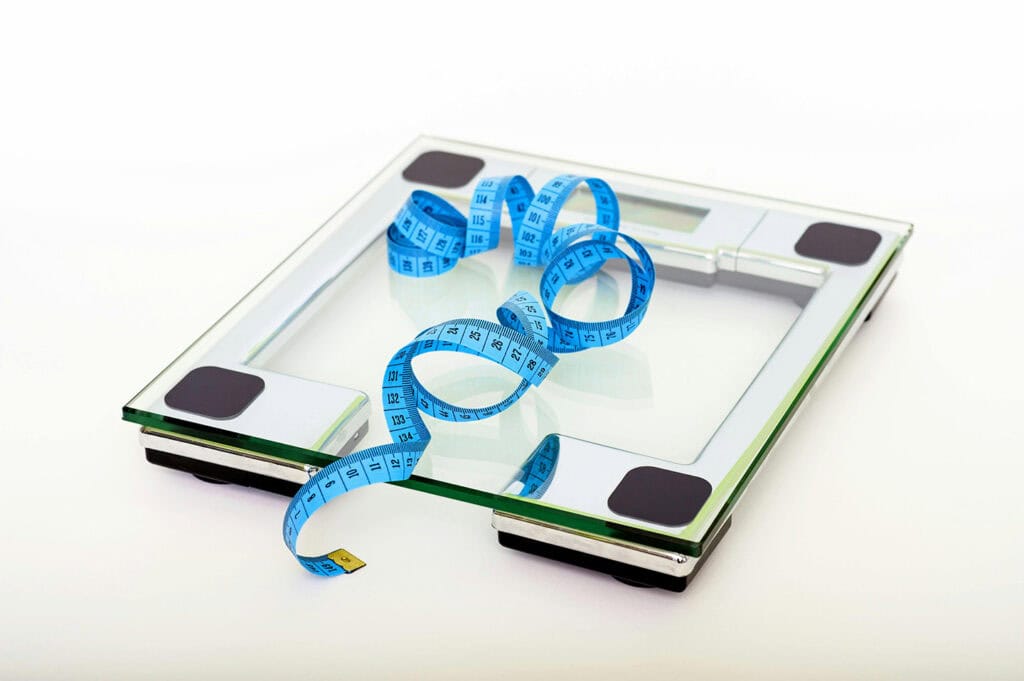
Are you struggling to find a diet plan that truly works for you? As you start your journey to better health, you’re the hero seeking a solution.
I’m here as your guide, ready to share insights and strategies to help you overcome the confusion and frustration of dieting.
In this article, we’ll explore 4 essential components of a good diet plan, useful tips, and healthy food options.
By following this plan, you’ll be well on your way to a balanced and effective diet.
Keep reading to discover how these steps will lead to a healthier, more vibrant you.
Here Are 4 Key Components of a Good Diet Plan:
- Carbohydrates and Whole Grains: These provide essential energy and fiber. Choose complex carbs like brown rice, quinoa, and whole wheat bread for sustained energy and better digestion.
- Fats and Proteins: Essential for muscle repair and hormone production. Opt for healthy fats such as avocado and nuts, and lean proteins like chicken and fish to support overall health.
- Vegetables and Fruits: Rich in vitamins, minerals, and antioxidants. Incorporate a variety of colorful vegetables and fruits to boost immunity and prevent chronic diseases.
- Hydration: Crucial for maintaining bodily functions and supporting metabolism. Drink plenty of water throughout the day to stay hydrated and aid digestion.
Understanding the Basics of a Good Diet Plan
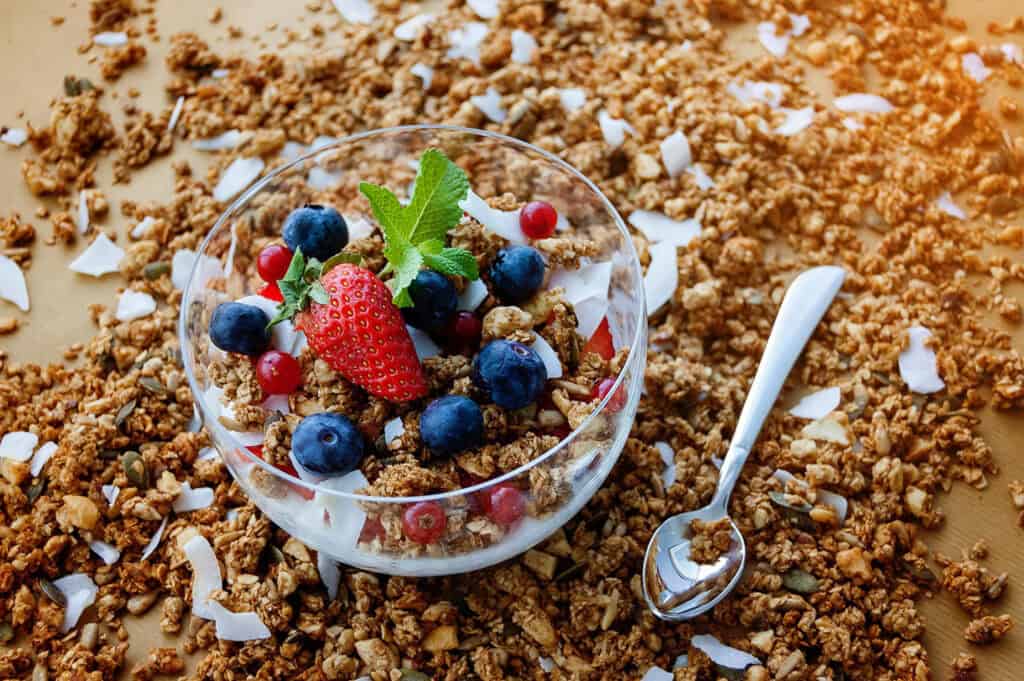
Understanding the basics of a good diet plan involves integrating various elements to support overall health. A well-balanced diet considers food intake and aligns with personal food preferences.
Adopting dietary approaches such as the volumetrics diet or plant-based diets can aid in disease prevention and managing conditions like chronic disease or developing diabetes.
Incorporating fresh fruit and other nutrient-dense foods contributes to healthy eating habits. Plans like the DASH diet focus on lowering blood pressure levels and improving heart health.
Supporting muscle mass and maintaining an active lifestyle through regular physical activity are crucial. Additionally, integrating self-love habits enhances overall well-being and helps sustain long-term health goals.
See also How to Love Your Own Body? 8 Practical Tips to Boost Body Image and Self-Esteem
Essential Nutrients for a Healthy Diet
Essential nutrients are the building blocks of a healthy diet, crucial for overall wellness. Incorporating a variety of food groups, such as whole grains, fruits, vegetables, and lean proteins—ensures a balanced diet that supports weight loss and lowers blood pressure.
A diet rich in essential nutrients helps reduce the risk of cardiovascular disease by limiting saturated fat and controlling calorie intake. For those following a flexitarian diet, balancing plant-based foods with occasional meat consumption provides diverse health benefits.
Prioritizing essential nutrients in your daily meals not only aids in weight loss but also contributes to long-term health and well-being.
1. Carbohydrates and Whole Grains

Carbohydrates, especially those from whole grains like wheat bread, are essential for a healthy eating plan. They provide energy, support muscle mass, and help maintain balanced meals. Whole grains offer health benefits such as stabilizing blood sugar and aiding in weight loss programs like the Volumetrics diet.
When included in a balanced diet, they can also lower blood pressure and prevent unwanted weight gain.
Whether your goal is to lose weight or maintain your current weight, incorporating whole grains into your meal plans can make a significant difference in overall health and wellness. Knowing how many calories to consume is key to achieving these benefits.
Here are 10 healthy sources of carbohydrates and whole grains:
- Oats: High in fiber, helps lower cholesterol.
- Brown Rice: Provides lasting energy, rich in manganese.
- Quinoa: Gluten-free, complete protein.
- Whole Wheat Bread: Nutrient-dense, aids digestion.
- Barley: Supports digestion, and controls blood sugar.
- Sweet Potatoes: Rich in vitamins A and C.
- Whole Grain Pasta: Slow-digesting, maintains energy.
- Millet: Gluten-free, heart-healthy.
- Buckwheat: Controls blood sugar, high in antioxidants.
- Bulgar Wheat: High in fiber, low in fat.
2. Fats and Proteins
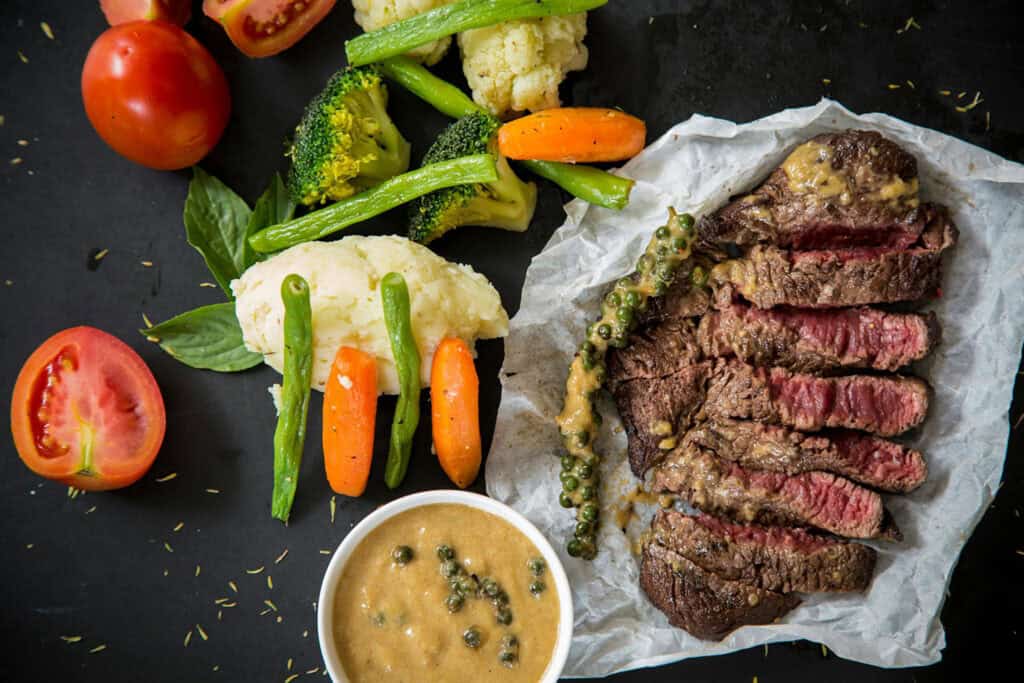
Fats and proteins are vital components of a good diet plan, essential for weight management and overall health. Incorporating different foods like lean protein sources—such as low-fat dairy products, fish, and poultry—can help maintain a healthy weight or gain weight if needed.
Healthy fats, including those from olive oil, support heart health, while limiting saturated fats is crucial. A balanced approach avoids strict diets that eliminate entire food groups, ensuring all major food groups are represented.
Consulting a registered dietitian can help tailor a plan that aligns with individual goals and nutritional needs, promoting long-term success.
Here are 15 healthy fats and proteins to include in your diet:
- Avocado: Rich in monounsaturated fats and essential nutrients, it supports heart health.
- Nuts (e.g., almonds, walnuts): High in healthy fats, protein, and fiber, benefiting heart health and weight management.
- Seeds (e.g., chia, flaxseed): Provide omega-3 fatty acids and protein, supporting digestion and overall wellness.
- Fatty Fish (e.g., salmon, mackerel): Rich in omega-3s and protein, promoting heart health and reducing inflammation.
- Tofu: A plant-based protein, low in saturated fat, supporting a balanced diet.
- Tempeh: High in protein and probiotics, beneficial for gut health.
- Eggs: Complete protein with essential amino acids, supporting muscle health.
- Greek Yogurt: High in protein and calcium, aiding gut health.
- Cottage Cheese: Low in fat and high in protein, helping with muscle repair.
- Peanut Butter: Contains healthy fats and protein; choose natural varieties for better health.
- Chicken Breast: A lean protein source, low in saturated fat, aiding muscle growth.
- Turkey: Lean meat high in protein, supporting weight management.
- Lean Beef: High-quality protein with essential nutrients; opt for lean cuts.
- Pork Tenderloin: A lean cut of pork provides protein, and is lower in fat compared to other cuts.
- Lamb Chops: Offers protein and nutrients; choose lean cuts to reduce fat.
3. Vegetables and Fruits
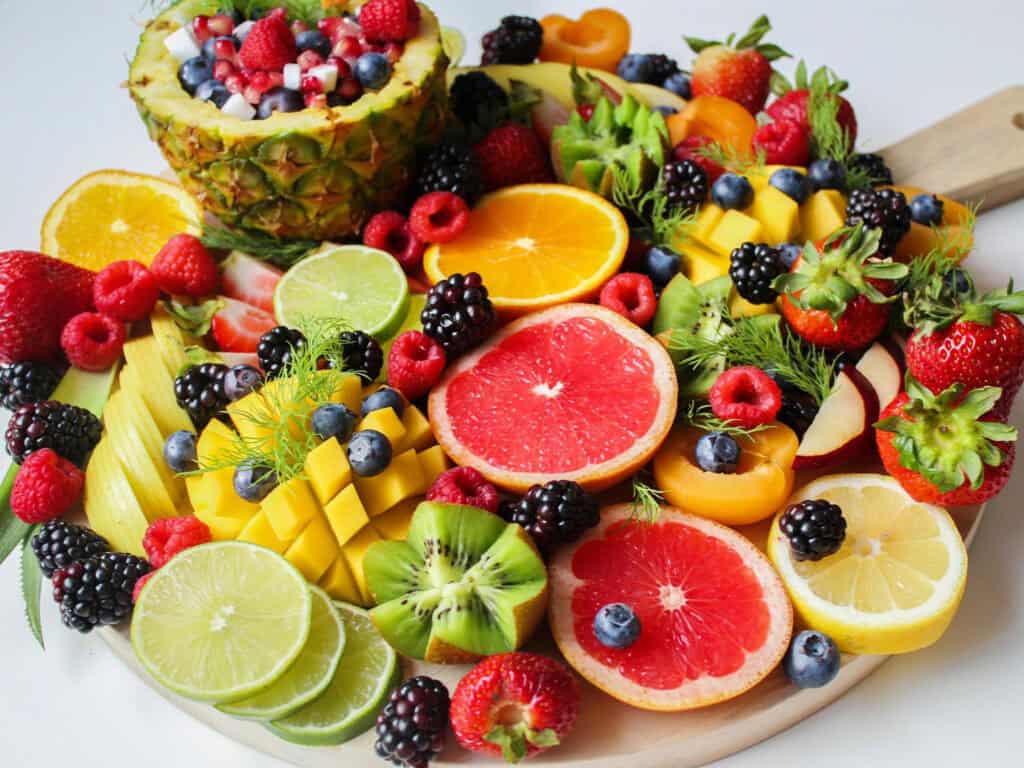
In a balanced diet plan, vegetables and fresh fruits play a crucial role. They help manage calorie intake and are integral to a healthy eating plan, especially for those on a flexitarian diet.
Rich in essential vitamins, minerals, and antioxidants, these foods offer significant health benefits, including disease prevention and reduced risk of chronic conditions like cardiovascular disease.
Consuming a variety of vegetables and fruits can aid in losing weight and support balanced meals, ultimately contributing to overall wellness. Moreover, they can help slow cognitive decline and lower the risk of developing heart disease, enhancing long-term health and vitality.
Here’s a list of 10 healthy vegetable and 10 fruit sources:
Vegetables:
- Spinach – High in vitamins A, C, and K, iron, and fiber.
- Broccoli – Rich in vitamins C and K, fiber, and antioxidants.
- Carrots – Excellent source of beta-carotene, fiber, and vitamin K.
- Bell Peppers – Packed with vitamins A and C, antioxidants, and fiber.
- Kale – Nutrient-dense, high in vitamins A, C, and K, and calcium.
- Tomatoes – Full of vitamins C and K, lycopene, and antioxidants.
- Sweet Potatoes – High in beta-carotene, vitamin C, and fiber.
- Brussels Sprouts – Rich in vitamins C and K, fiber, and antioxidants.
- Green Beans – Good source of vitamins A, C, and K, and fiber.
- Beets – High in fiber, folate, and manganese.
Fruits:
- Mangoes – Good source of vitamins A and C, and fiber.
- Apples – Provide fiber, vitamins C and B, and antioxidants.
- Berries (e.g., blueberries, strawberries) – Rich in antioxidants, vitamins C and K, and fiber.
- Oranges – High in vitamin C, fiber, and antioxidants.
- Bananas – Good source of potassium, vitamin B6, and fiber.
- Avocados – Packed with healthy fats, vitamins C, E, and K, and fiber.
- Kiwi – Rich in vitamins C and K, fiber, and antioxidants.
- Grapes – Provide vitamins C and K, and antioxidants.
- Pineapple – High in vitamin C, manganese, and digestive enzymes.
- Cherries – Rich in vitamins A and C, and antioxidants.
4. Hydration
Hydration is a vital aspect of a good diet plan, essential for maintaining overall health. Drinking adequate water supports a balanced diet by helping your body effectively process nutrients from food groups like leafy greens and whole grains.
Proper hydration aids in weight loss by reducing hunger and supporting metabolism, which is beneficial when following a weight loss plan or the DASH diet.
Incorporating healthy eating habits that prioritize hydration not only helps you gain confidence in your body but also enhances overall wellness. Focusing on hydration as part of a healthy diet plan offers numerous health benefits, contributing to effective weight management and improved bodily functions.
Portion Control in Dieting

- Carbohydrates and Whole Grains:
- Amount: Fill 1/4 of your plate with whole grains or starchy carbohydrates. This is about 1/2 cup of cooked grains or 1 slice of whole-grain bread.
- Action Plan: Measure portions using a cup or scale. Incorporate a variety of whole grains like quinoa, brown rice, and oats.
2. Fats and Proteins
- Amount: Allocate 1/4 of your plate to protein sources (approximately 3-4 ounces) and another 1/4 to healthy fats (1-2 tablespoons).
- Action Plan: Use a food scale or measuring spoons to ensure portion control. Choose lean proteins and moderate the use of fats.
3. Vegetables and Fruits
- Amount: Make half of your plate vegetables and fruits. This is about 1-2 cups of vegetables and 1 serving of fruit (1 medium fruit or 1/2 cup chopped fruit).
- Action Plan: Use visual cues or measuring tools to fill half your plate with a mix of colorful vegetables and fruits.
4. Water
- Amount: Aim for at least 8 cups (64 ounces) of water daily.
- Action Plan: Carry a reusable water bottle and drink throughout the day. Use a water-tracking app to monitor your intake.
How to Customize a Diet Plan for Your Needs
Customizing a diet plan to fit your needs involves a strategic approach to balance health and personal goals. Begin by defining your objectives, such as weight loss or managing a health condition like heart disease.
Incorporate a variety of food groups to ensure a healthy and balanced diet, including lean meats for healthy protein and a range of healthy foods. Opt for a Mediterranean diet or a low-fat diet, depending on your preferences and needs.
Use a healthy plate model, filling half with vegetables and fruits, one quarter with whole grains, and one quarter with lean proteins.
Consider any existing eating disorders and adjust portions and food choices accordingly. Regularly review and adjust your weight loss program to align with your evolving health benefits and lifestyle goals.
Meal Planning Tips for a Balanced Diet
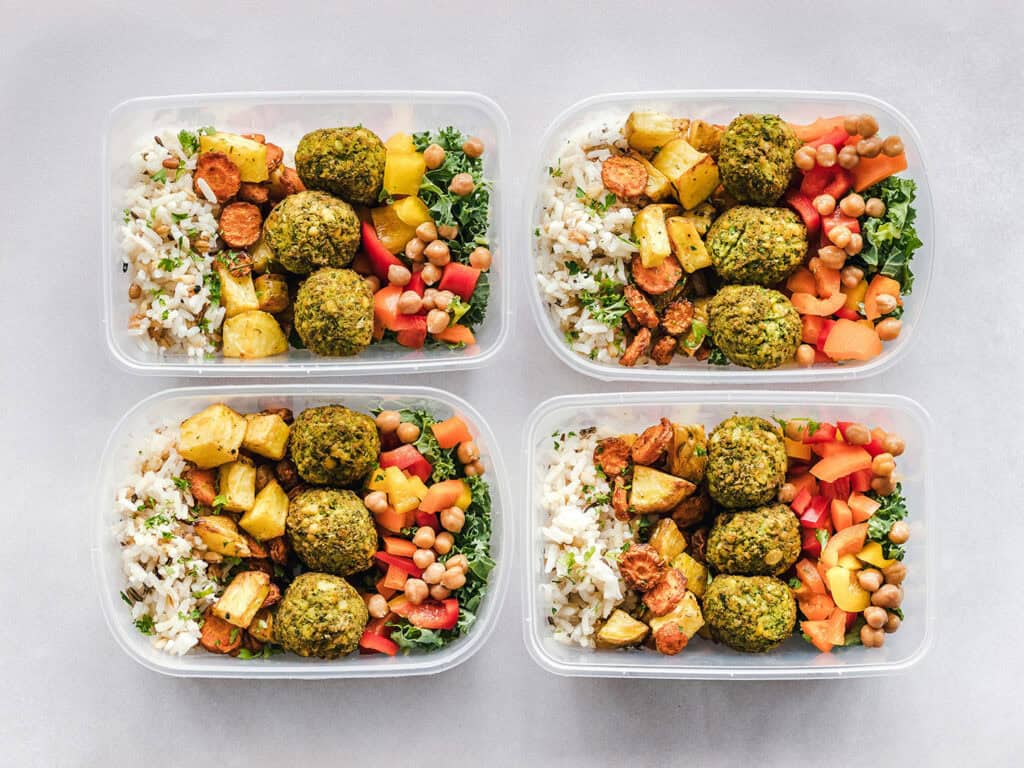
- Incorporate a Variety of Food Groups: Ensure each meal includes vegetables, fruits, lean proteins, whole grains, and healthy fats to cover all nutritional needs.
- Plan Balanced Meals: Aim for a balance of macronutrients: 50% carbohydrates, 25% protein, and 25% healthy fats in each meal.
- Prioritize Whole Foods: Choose whole, minimally processed foods for better nutrient density and avoid foods high in added sugars and unhealthy fats.
- Prepare Meals Ahead of Time: Cook and store meals in advance to avoid last-minute unhealthy choices and ensure convenience.
- Include Healthy Snacks: Plan for nutritious snacks like fruits, nuts, or yogurt to maintain energy levels and avoid overeating at meal times.
- Stay Consistent with Meals: Maintain regular meal times to stabilize blood sugar levels and prevent excessive hunger or cravings.
- Use a Meal Planner or App: Utilize tools to organize your meal plans, track nutrients, and manage grocery lists efficiently.
- Be Mindful of Ingredients: Opt for whole, minimally processed foods and limit added sugars, excessive salt, and unhealthy fats.
- Monitor Portion Sizes: Use measuring cups or a food scale to keep portions in check and prevent overeating.
- Adjust Based on Personal Goals: Tailor your meal plan to specific health objectives, such as weight loss, muscle gain, or managing a health condition.
Common Dieting Mistakes and How to Avoid Them
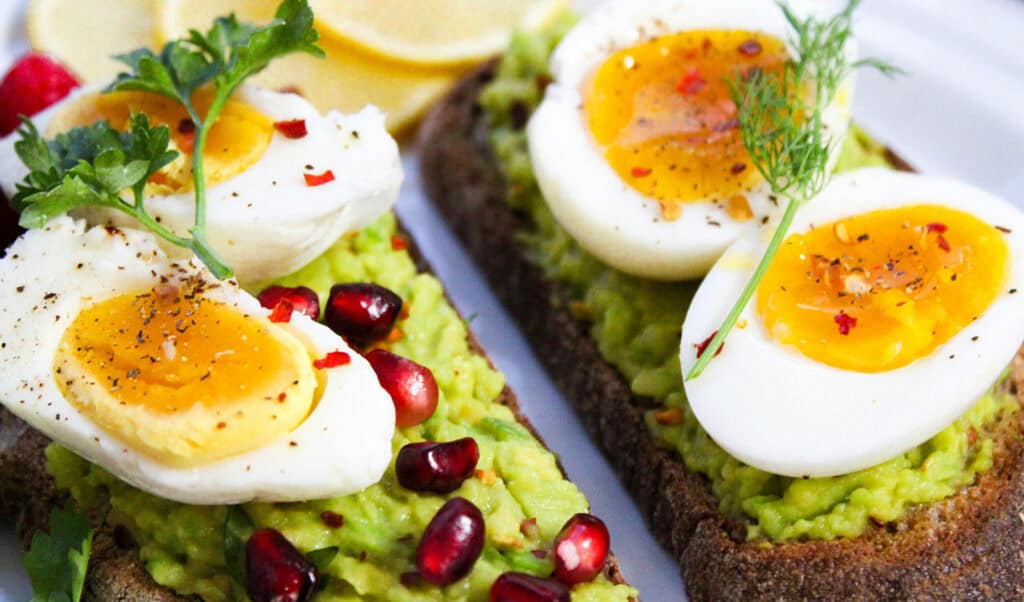
- Skipping Meals: Leads to overeating later. Solution: Eat smaller, balanced meals throughout the day.
- Relying on Fad Diets: Often unsustainable and nutritionally unbalanced. Solution: Focus on a well-rounded, long-term healthy eating plan.
- Ignoring Portion Sizes: Can result in consuming more calories than intended. Solution: Use measuring cups or a food scale to control portions.
- Neglecting Hydration: Can be mistaken for hunger, leading to overeating. Solution: Drink plenty of water throughout the day.
- Overemphasizing Low-Fat Products: These may contain added sugars. Solution: Choose whole foods and read labels carefully.
- Not Planning Meals: Can lead to impulsive, unhealthy choices. Solution: Plan and prep meals in advance to stay on track.
- Underestimating Liquid Calories: Drinks like sugary beverages and alcohol add up. Solution: Opt for water, herbal teas, or black coffee.
- Skipping Nutrients for Quick Results: Eliminating entire food groups can cause nutrient deficiencies. Solution: Ensure your diet includes a variety of nutrient-rich foods.
- Setting Unrealistic Goals: Can lead to frustration and abandonment. Solution: Set achievable, incremental goals and track progress.
- Ignoring Mental and Emotional Health: Stress and emotions can impact eating habits. Solution: Practice mindfulness, manage stress, and seek support if needed.
See also Gym Vision Board: 6 Steps to Achieve Your Fitness Goals
What is a Good Diet Plan? A Recap
A good diet plan is tailored to your unique needs and goals. Start by consulting a registered dietitian to address dietary restrictions and create a balanced approach. Incorporate healthy meals rich in various food groups, including lean meats and plant-based options, and use olive oil for healthy fats.
Integrate physical activity to support weight loss and maintain weight loss. Consider a self-care planner and self-love activities to stay motivated and focused on your health journey.
Avoid extreme diets that may lead to eating disorders. The Mayo Clinic Diet offers a structured plan for healthy eating and managing weight. Prioritize consistency and balance for sustainable results and overall well-being.

